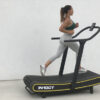
What is Functional Training?
Functional training is any type of exercise that has a direct relationship to the activities you perform in your daily life.
Whether you are a marathon runner, a triathlete, or simply a homemaker who wants to carry their children without injury, functional training can help. Functional training has its origins in rehabilitation. Physical therapists developed exercises that mimicked what patients did at home or work to return to their lives or jobs after an injury or surgery. Thus, if a patient’s job required repeatedly heavy lifting, rehab would be targeted towards helping them achieve that. Functional training mostly involves activities targeted at the core muscles (abdominal and lower back).
Much attention has been given to the concept of functional training over the last several years. It seems however that while many personal trainers’ market themselves as functional training experts they may often miss the point when it comes to actually applying the concepts effectively. By definition “functional training” is training with a purpose. In other words, it should have a positive effect on the activity or sport one is participating in.
Functional training takes a multi-faceted and integrated approach to improving the strength and overall conditioning of those using it.
Originally this functional approach was exclusive to the rehabilitation and sports medicine fields. Sports rehabilitation, performed by Certified Athletic Trainers and Physical Therapists, by nature had to not only return the athlete to everyday living but also had to return him or her to the rigors of competitive sports. Work Hardening is a “modern” approach to rehabilitation sometimes used by Physical Therapists. This is a type of “sport specific” conditioning for everyday life, which teaches the patient to lift boxes, turn wrenches, carry beams, push wheel barrels and anything else that is applicable to their work environment. This is true functional training.
Functional training must integrate all aspects of human movement.
Functional training is not carried out on treadmills, cross trainers, rowing machines etc. To get a better understanding of the approach needed one must first become a student of human movement. Observing children at play, adults at work, and athletes in competition is a good place to start. Since life, like sport, is basically a chaotic, unpredictable event, one’s training should reflect this reality to some extent.
Generally most functional training advocates de-emphasize weight machines and most single joint movements. The truth is, however, that almost any exercise can be functional for someone at a specific time in his or her life or training cycle. Often if one is in the early stages of rehabilitation, or a very new and perhaps a somewhat uncoordinated exerciser, then a “selectorized” machine or a simple exercise movement may be functional. The use of machines in general, goes against the functional training philosophy for many reasons.
Today the functional training movement tends to emphasize cable machines, dumbbells, medicine balls, stability balls, resistance bands and body weight exercises. The important thing is to first understand the needs and abilities of the individual client/athlete before implementing any of these techniques and strategies.
Home Workout sells “functional training equipment” as a way for strength coaches, personal trainers, and athletes to enhance performance and add variety to a training program. The use of much of this equipment, especially unstable equipment such as stability balls, cable machines, foam rollers and stability discs, has led many people to believe that the minute someone uses one of these pieces the exercise is “functional”. Remember that just because an exercise is challenging it does not mean that it is necessarily functional.
Unstable equipment is only one modality that should be used sparingly at best. Originally this type of equipment was used in the rehabilitation setting to enhance static balance, proprioception, joint stability, and core strength with much success. Some research does exist that shows increased muscular recruitment at the core for certain exercises and at the ankle joint during an ankle rehabilitation protocol.



